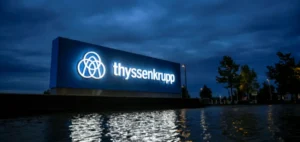Rosatom, Gazprom and the Sakhalin Regional Government sign ahydrogen energy cooperation agreement for the Sakhalin Island Hydrogen Production Complex project.
Rosatom, Gazprom and the Sakhalin regional government plan to establish a hydrogen power plant
The parties intend to cooperate to establish hydrogen production on Sakhalin Island.
This will be achieved using steam methane reforming with additional carbon dioxide capture.
Accompanied by a product supply system for foreign markets and consumers in the Sakhalin region.
“The authorities of the Sakhalin region are interested in developing clean energy in Sakhalin that would not harm the environment or people’s health. It is also important for us to create a large, export-oriented hydrogen production cluster on Sakhalin Island, and to implement new types of fuel in various sectors of the economy. This will enable us to develop unique skills in the region that are highly valued in the promising global hydrogen market. As a result, the region will have a new sector of the high-tech economy that will create many jobs for local residents for many years to come,” says Governor Valeriy Limarenko.
Rosatom “actively involved in establishing the hydrogen energy market in Russia”.
“Rosatom is focusing on the development of low-carbon technologies and is actively participating in the establishment of the hydrogen energy market in Russia. The use of hydrogen in sectors such as transport, utilities and the chemical industry will significantly reduce harmful emissions into the atmosphere and ensure the transition to environmentally friendly production methods. I am confident that Gazprom’s participation and the overall support of the Sakhalin region’s government will enable this ambitious project to be completed successfully”, comments Kirill Komarov, First Deputy Director General for Development and International Affairs at Rosatom State Corporation.
The cooperation agreement was signed on the sidelines of the Eastern Economic Forum held annually in Vladivostok, Russia.
It will enable the island to become a model of development for the Far East.
All the more so as the authorities aim to achieve carbon neutrality on the island by 2025.






















